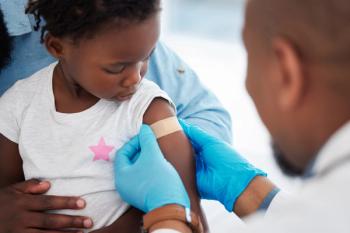
Food allergy more common in inner-city children
Food has joined the list of allergies for which inner-city children are at higher risk, according to a recent study, which found that at least 1 in 10 young children from 4 large cities had an allergy to peanuts, eggs, or milk.
Food has joined the list of
Researchers followed 516 inner-city children from Baltimore, New York, Boston, and St. Louis from birth to 5 years of age. Each year they assessed household allergen exposure, diet, and clinical history and performed a physical examination. At ages 1, 2, 3, and 5 years, they measured
Based on sensitization (IgE, 0.35 kU/L or higher) and clinical history, the investigators classified the children as allergic, possibly allergic, sensitized but tolerant, or not allergic/not sensitized. Only children with both elevated IgE and clinical symptoms were classified as allergic.
Overall, 55.4% of the children studied were sensitized, and 9.9% of those children had a
Boys and children with recurrent wheeze, eczema, and aeroallergen sensitization had a higher risk of food allergy, as did
The incidence of food allergy was extremely high, even for this high-risk by design cohort, the researchers conclude, especially considering the strict definition of food allergy the study used and the fact that it included only 3 common allergens. Moreover, the study’s strict criterion for allergy may underestimate the actual number of allergic children.
Compared with the 1 in 10 food allergy prevalence for inner-city children,
To get weekly clinical advice for today's pediatrician, subscribe to the Contemporary Pediatrics PediaMedia .
Newsletter
Access practical, evidence-based guidance to support better care for our youngest patients. Join our email list for the latest clinical updates.










